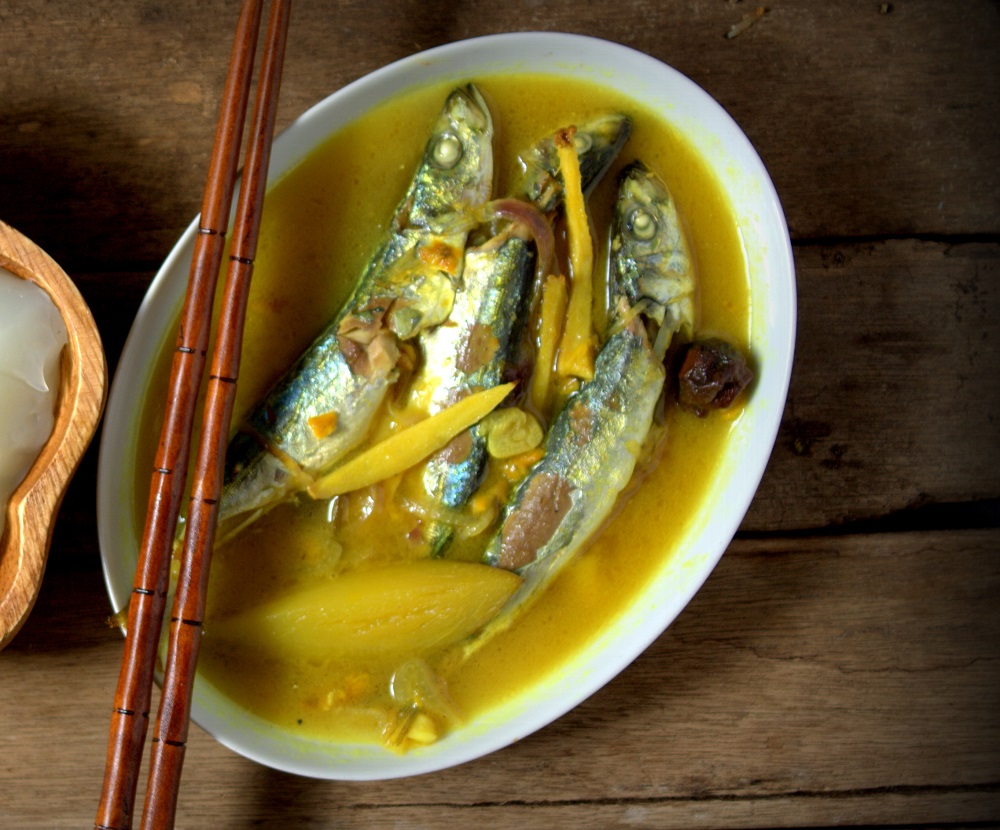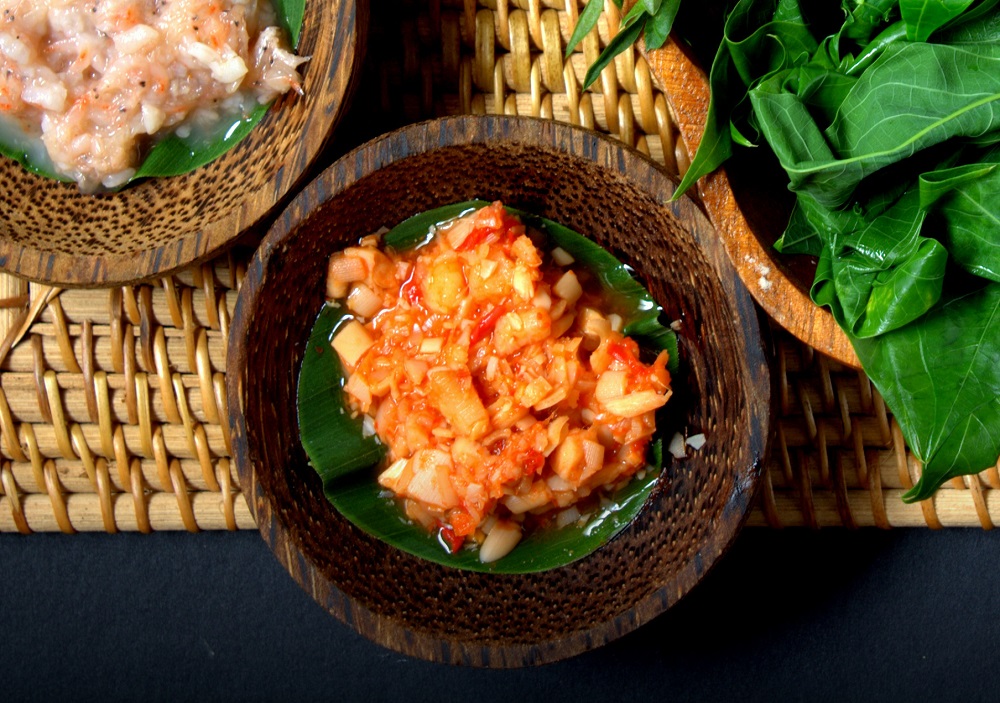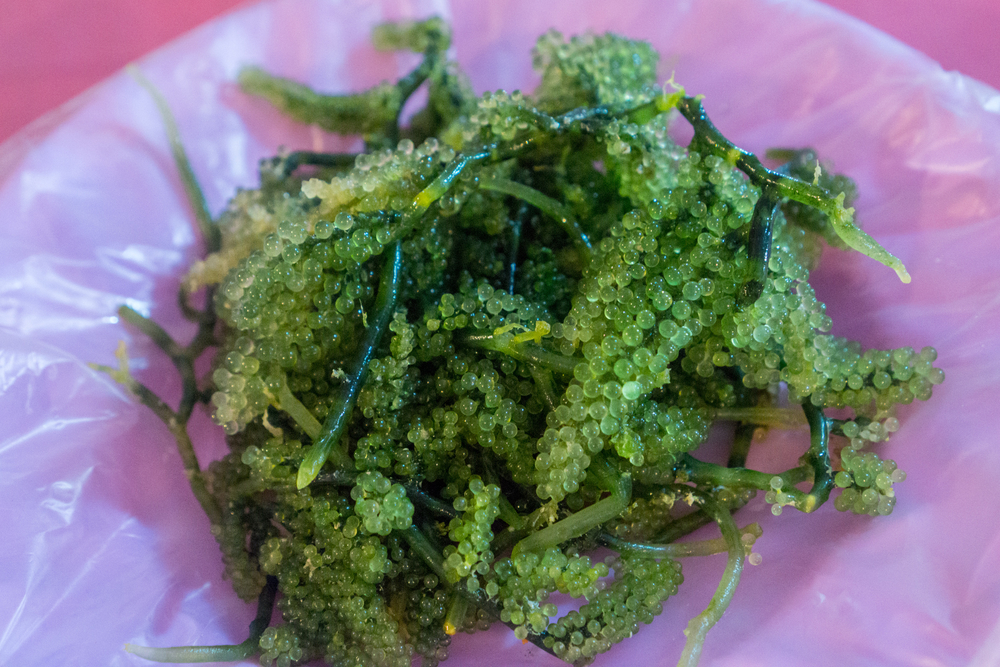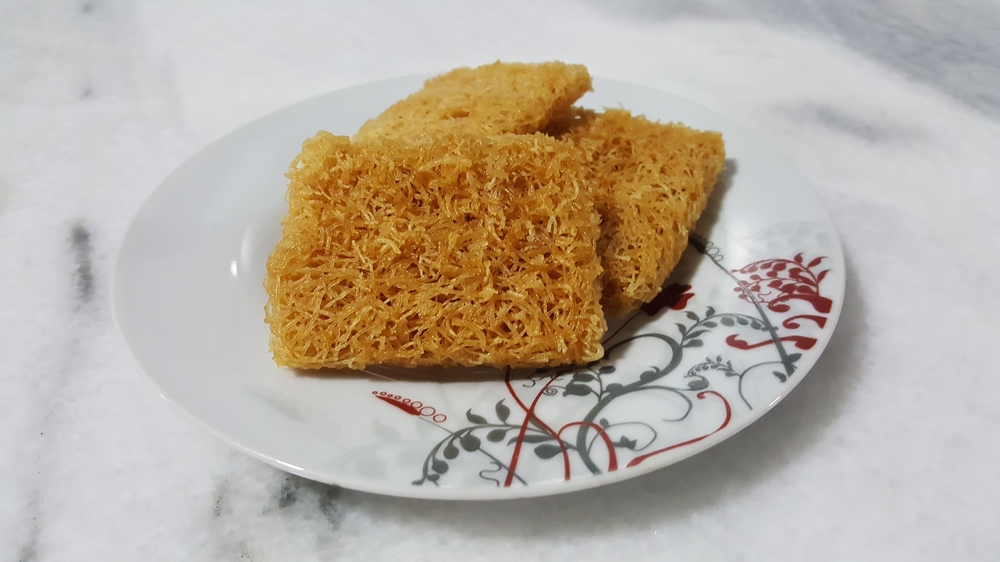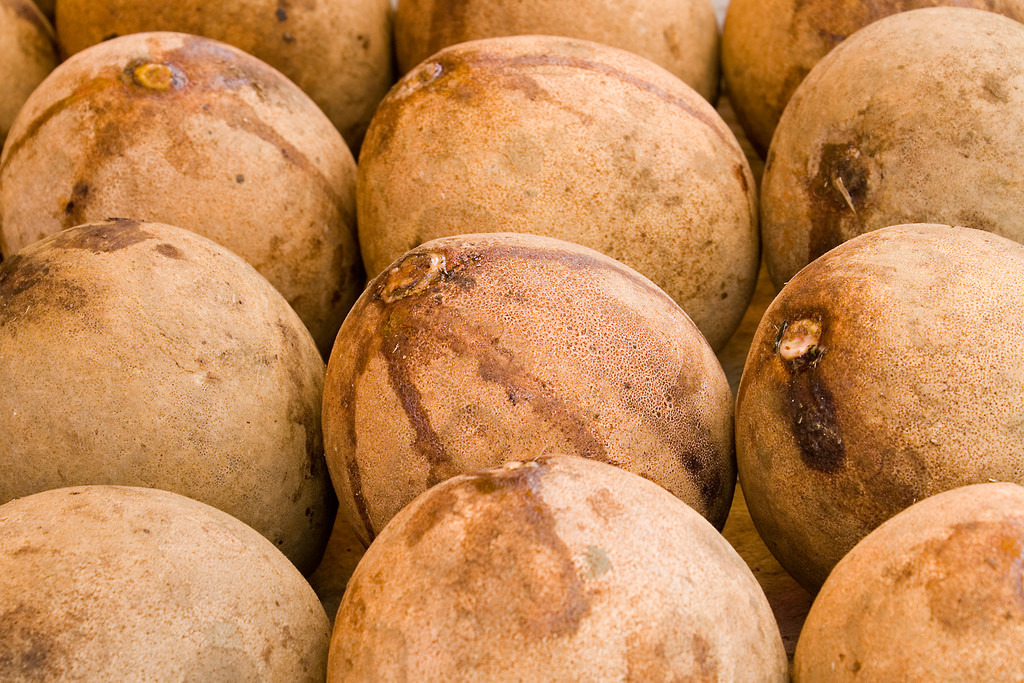East Malaysia is, without doubt, where many of Malaysia’s most beautiful natural treasures can be found: the Fairy Cave, Mount Kinabalu, the smallest frog in ‘the Old World’ and the Maliau Basin all call Malaysia Borneo home, among many others such as the incredibly diverse marine life.
But of course for many Malaysians, natural wonders cannot overshadow the food! Thanks to the varied culture of countless different tribes and communities, the food in Malaysian Borneo is unlike that found in Peninsular Malaysia. From rice wine to grape-like seaweed, there are some weird, wacky, and wonderful delicacies in this part of Malaysia.
Let’s take a look at some of these unusual dishes from Sarawak and Sabah:
1. Sago worms / Butod
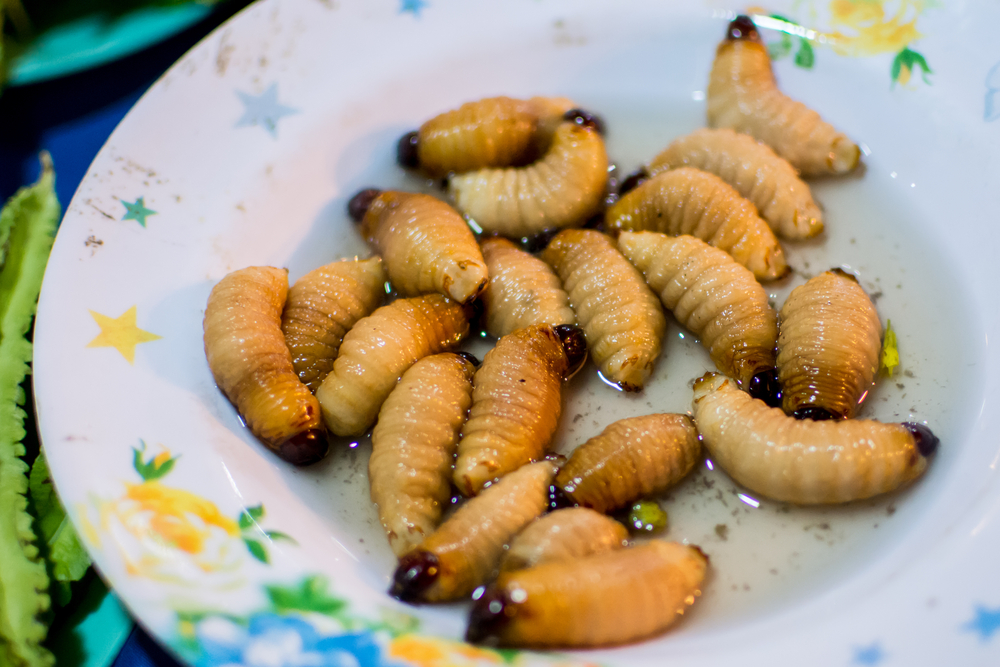 Eaten by the Kadazandusun tribespeople in Sabah and the Melanau ‘river people’ in Sarawak, sago worms are the larvae of palm weevils that live inside the trunks of fallen sago palm trees. About 100 worms can be harvested from a fallen tree at any one time. Fallen sago palms are even cut open a little to entice female sago weevils to nest there.
Eaten by the Kadazandusun tribespeople in Sabah and the Melanau ‘river people’ in Sarawak, sago worms are the larvae of palm weevils that live inside the trunks of fallen sago palm trees. About 100 worms can be harvested from a fallen tree at any one time. Fallen sago palms are even cut open a little to entice female sago weevils to nest there.
The worm is a popular delicacy in East Malaysia and can be either either raw or cooked (fried, boiled or sauteed). It takes a strong stomach to enjoy this fatty and creamy creature. But as long as you can channel Timon and Pumba from The Lion King, grub-eating will be a piece of cake. Slimy yet satisfying!
2. Midin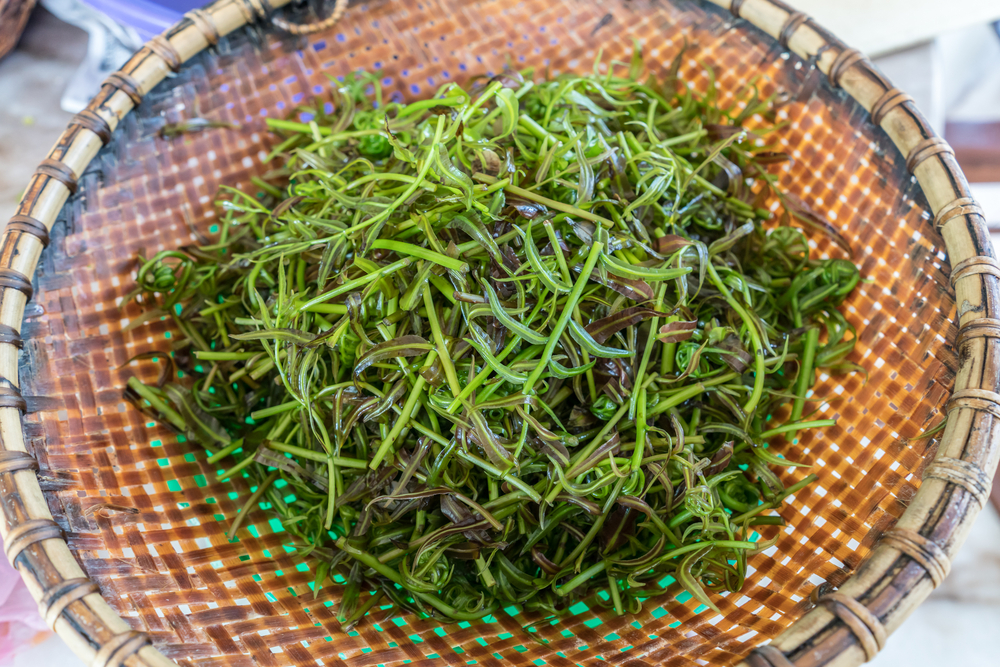
Midin is a wild fern that is abundant in the lowlands of Sarawak in open spaces like rubber plantations. The plant looks similar to the ferns eaten in West Malaysia but it’s quite different, in that midin stays crunchy even after being cooked, unlike pucuk paku which goes soft.
Midin also only stays fresh a couple of days after being harvested, so the best place to try midin is in its homeland, Sarawak. The parts of the fern that are eaten are the soft tips and curled leaves.
3. Tebaloi
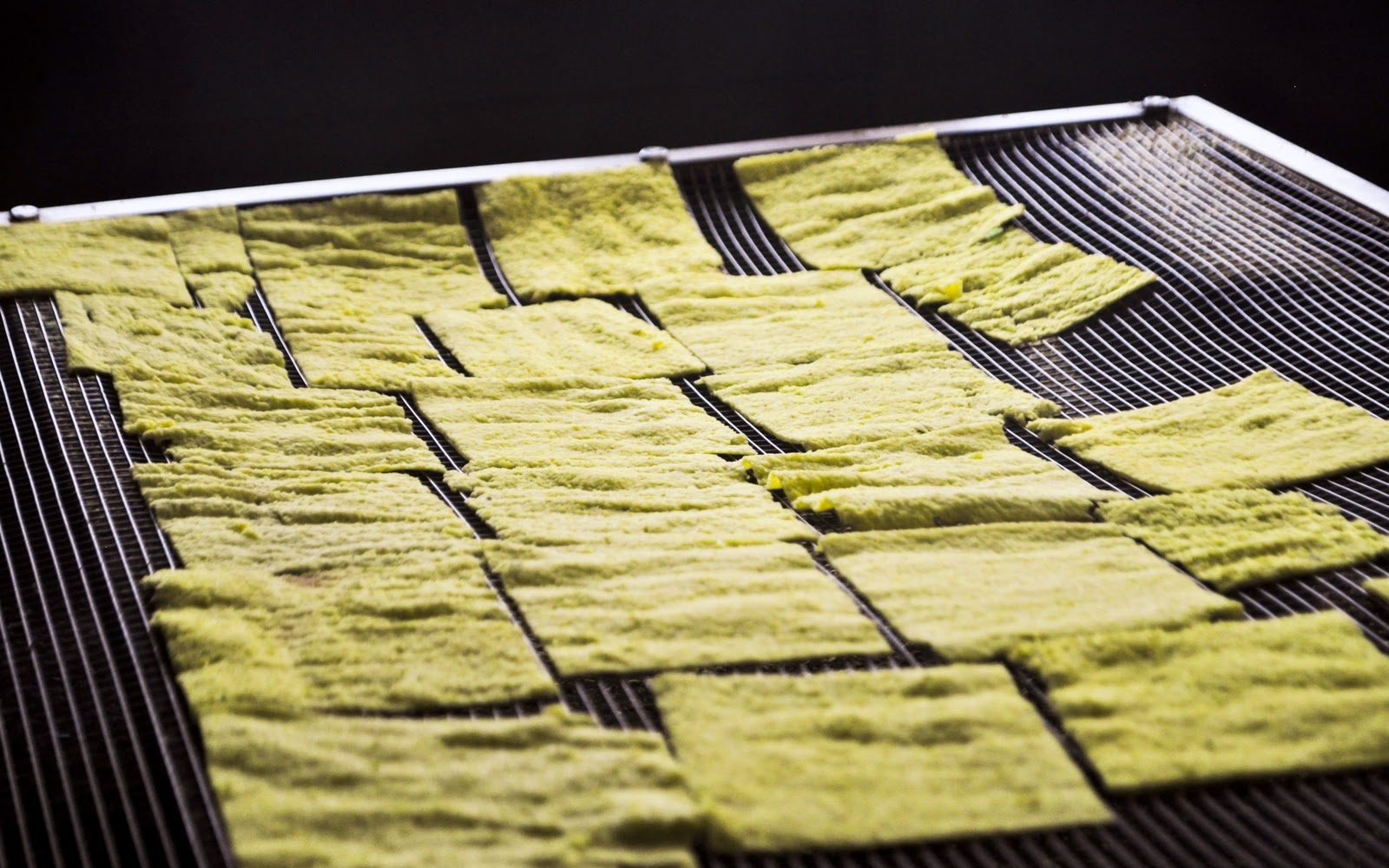
Tebaloi is a Melanau snack found in Sarawak. The biscuit-like sago treat is made with sago flour, grated coconut, eggs, and sugar.
Making it is a labour-intensive process so many people just buy it at stores and market. These biscuits are quite popular now after being promoted as a traditional snack and can be bought just about anywhere in Sarawak.
4. Umai / Hinava
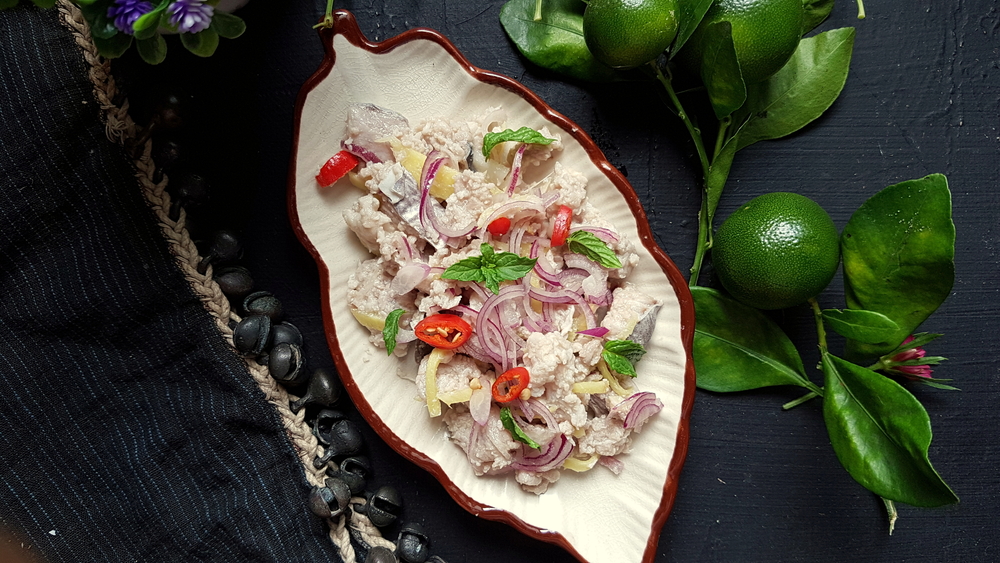
Another Melanau dish, mainly from the Dalat and Mukkah districts, umai is a staple for fishermen out at sea. The dish is a raw fish dish reminiscent of Peruvian ceviche. Umai is prepared using thin slices of raw fish marinated with assam paya or kelubi (a sour fruit from wild palms), onions, chillies, and a pinch of salt.
The recipe is a quick, no-fuss dish to suit the fishermen who didn’t have much space when at sea to prepare a full meal. The acidity of the assam paya is what ‘cooks’ the fish, much like lime or lemon in ceviche. Some people prefer to prepare the marinade as a sauce and dip the raw slices of fish in it before eating.
The Kadazan-Dusun people in Sabah have their own version of this dish called Hinava which is made with raw fish, lime, ginger, shallots, and chilli.
5. Manok pansoh
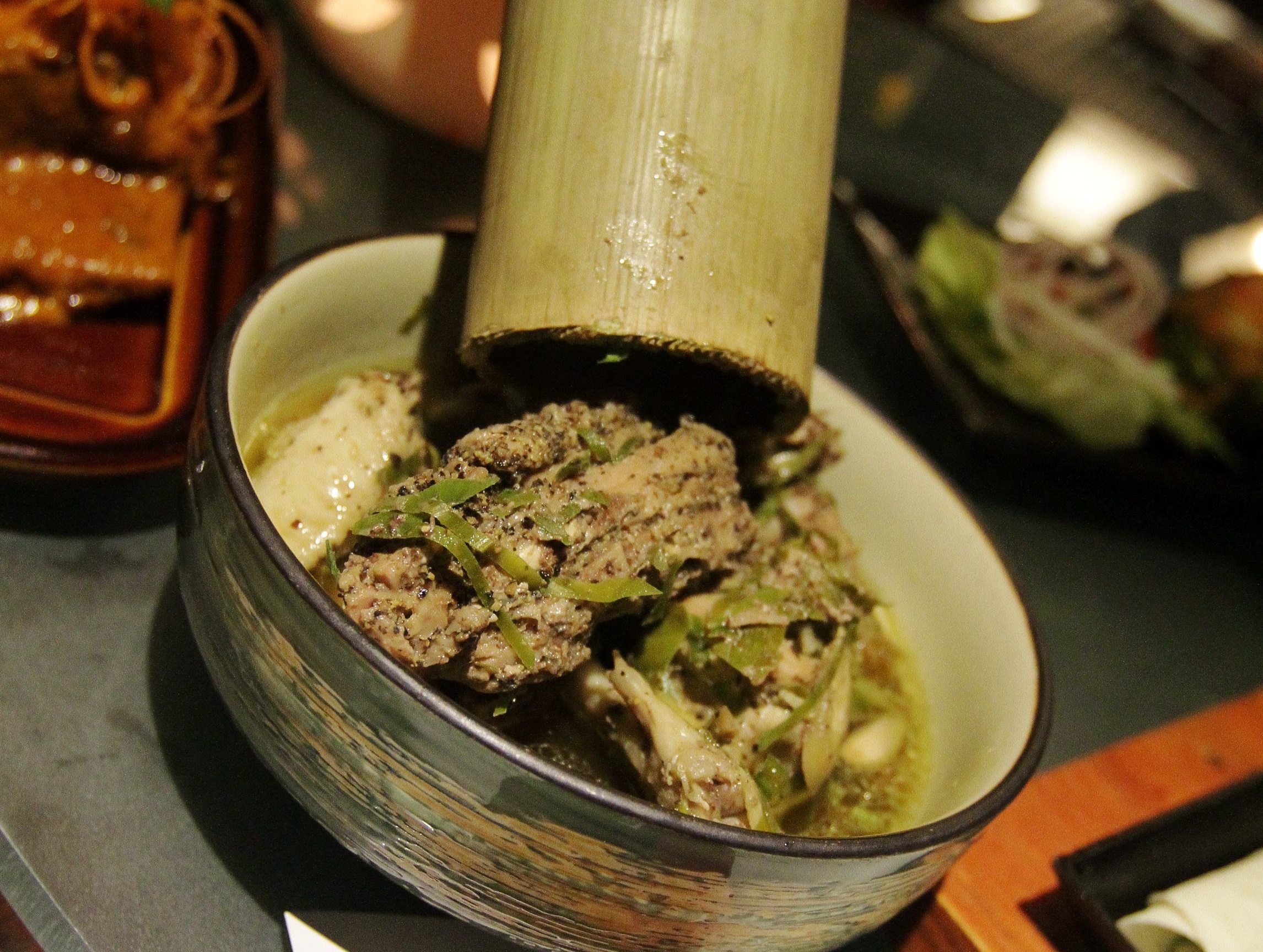
This is a chicken dish cooked in bamboo over hot coals, traditional of the Iban, Bidayuh and Orang Ulu tribes in Sarawak. The chicken is cut up into small cubes and marinated with lemongrass, ginger, garlic, tumeric leaves, tapioca leaves and more.
Each family, of course, has their own unique recipe. The mixture is then placed inside a metre-long piece of bamboo capped with a bunch of tapioca leaves. The bamboo is then placed on hot coal to cook.
Usually cooked at home during special occasions, this dish is starting to gain popularity at restaurants too; it is becoming an attraction of its own. Any visit to Sarawak should include a taste of manok pansoh.
6. Pinasakan
Not usually found in restaurants, pinasakan is a dish of preserved ikan basung, a fatty fish found everywhere in Sabah. Pinasakan was a dish traditionally made when people used to travel down from the highlands to trade with coastal tribes. People from inner tribes would trade their highland produce for other produce like fresh fish.
In order to ensure that the fish would didn’t spoil during the couple of days trek back up to their highland homes, the Kadazan-Dusun people would cook the fish over very low heat with asam keping, turmeric, ginger, lemongrass, cili padi, and salt. The low heat and fatty fish would ensure the fish didn’t burn and just enough moisture was extracted. Pinasakan can be kept for up to two weeks.
7. Gula mitai
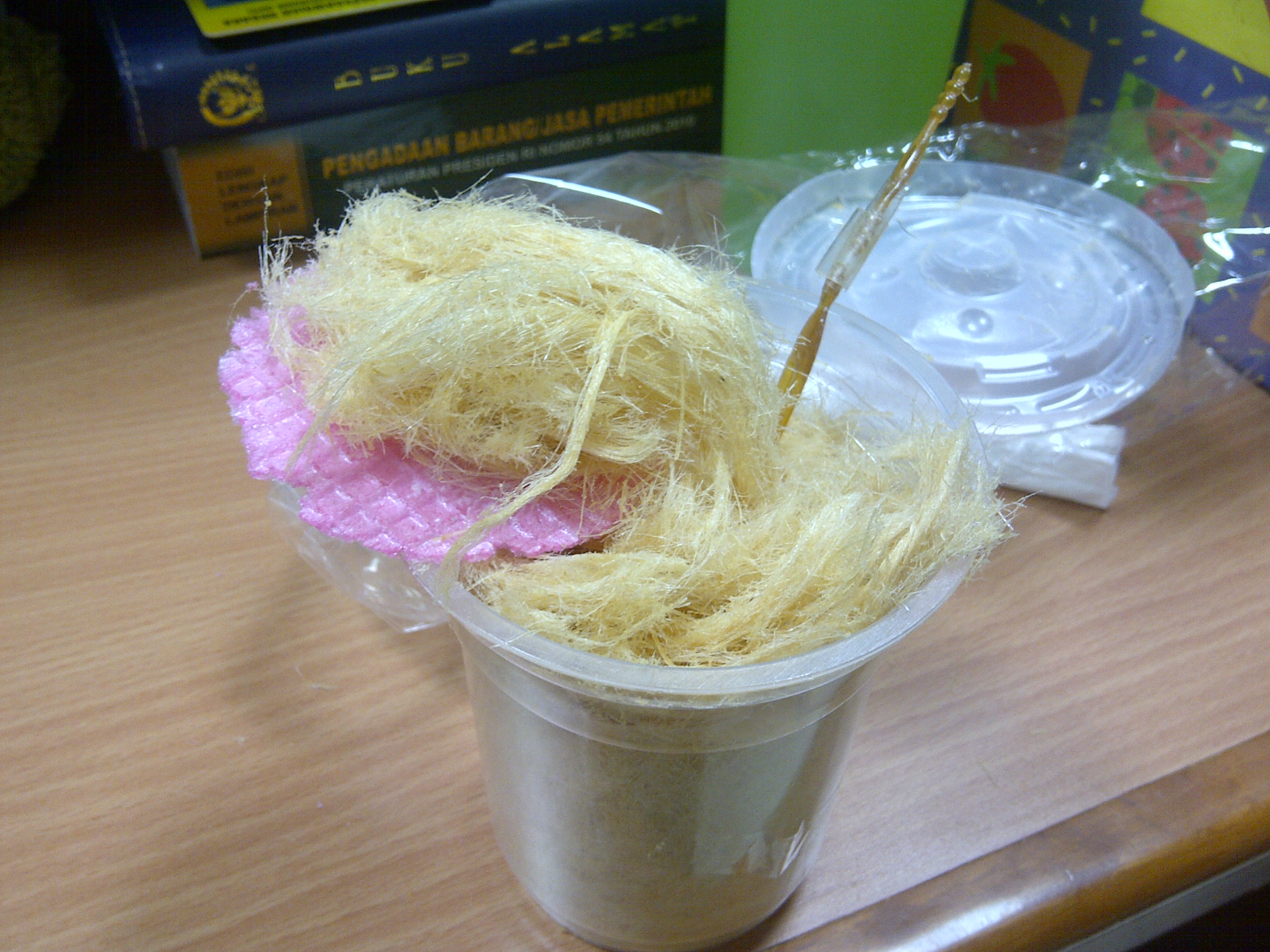
Gula mitai is Sarawak’s candy floss. It’s made by melting sugar and then pulling and folding it as the sugar cools – like hand-pulled noodles. The sugar has to be pulled and folded while it’s still very hot, so many people just buy this snack from markets where you can watch experienced gula mitai makers work their magic.
The rope of sugar is folded and pulled over and over until it becomes strands of sugar that are as thin as a strand of hair. It’s then portioned and rolled into a an easy to hold snack. The texture of gula mitai is mid-way between cotton candy and spun sugar – it’s like soft spun sugar that melts in your mouth but can be crunched on as well. Some say that this snack is originally from Indonesia where it is known as gula rambut nenek, or ‘grandmother’s hair candy’.
8. Tuak
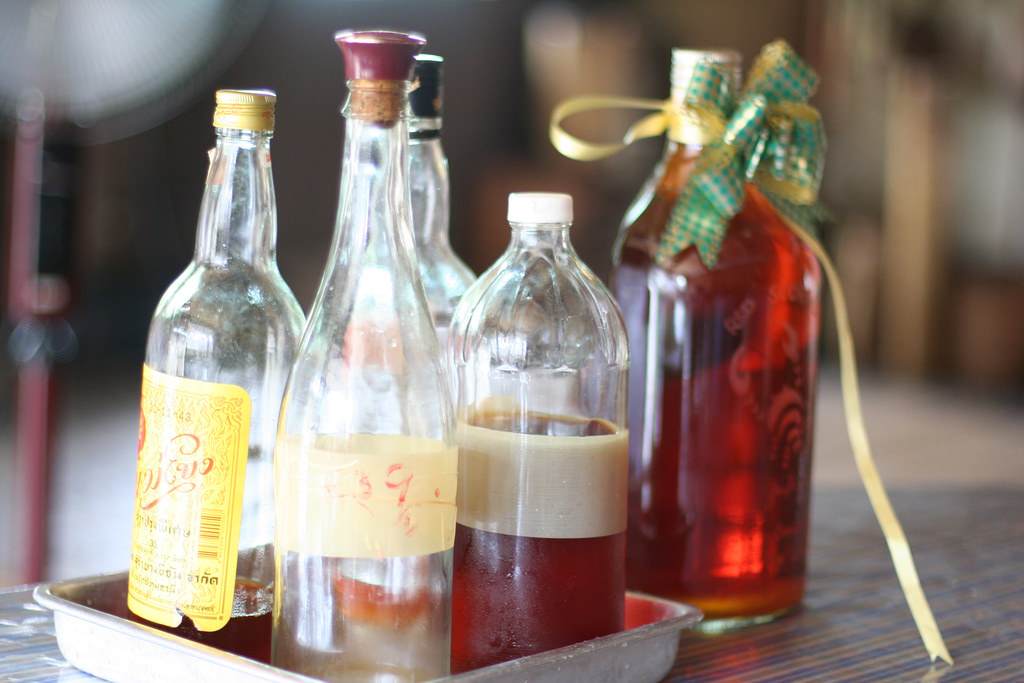
Better known as rice wine, tuak or is made from fermented glutinous rice, sugar, and yeast. Simple though it seems, making tuak is an art that Sarawakian women have perfected over years of experience.
Tuak is usually drunk during festivals and celebrations like the Gawai festival, but it takes a long time to mature, so women start making it a couple of months in advance. There are even rules and taboos associated with the process. One of the rules is that women on their period should not make tuak because the tuak will turn out to be sour.
Generally, tuak has an alcohol content of 18%–25% ABV. The Sabahan version of rice wine is called tapai and is made with glutinous rice, sugar, and a natural yeast called ‘sasad’ which is made from rice. Tapai is also often drunk during special occasions.
9. UFO tarts
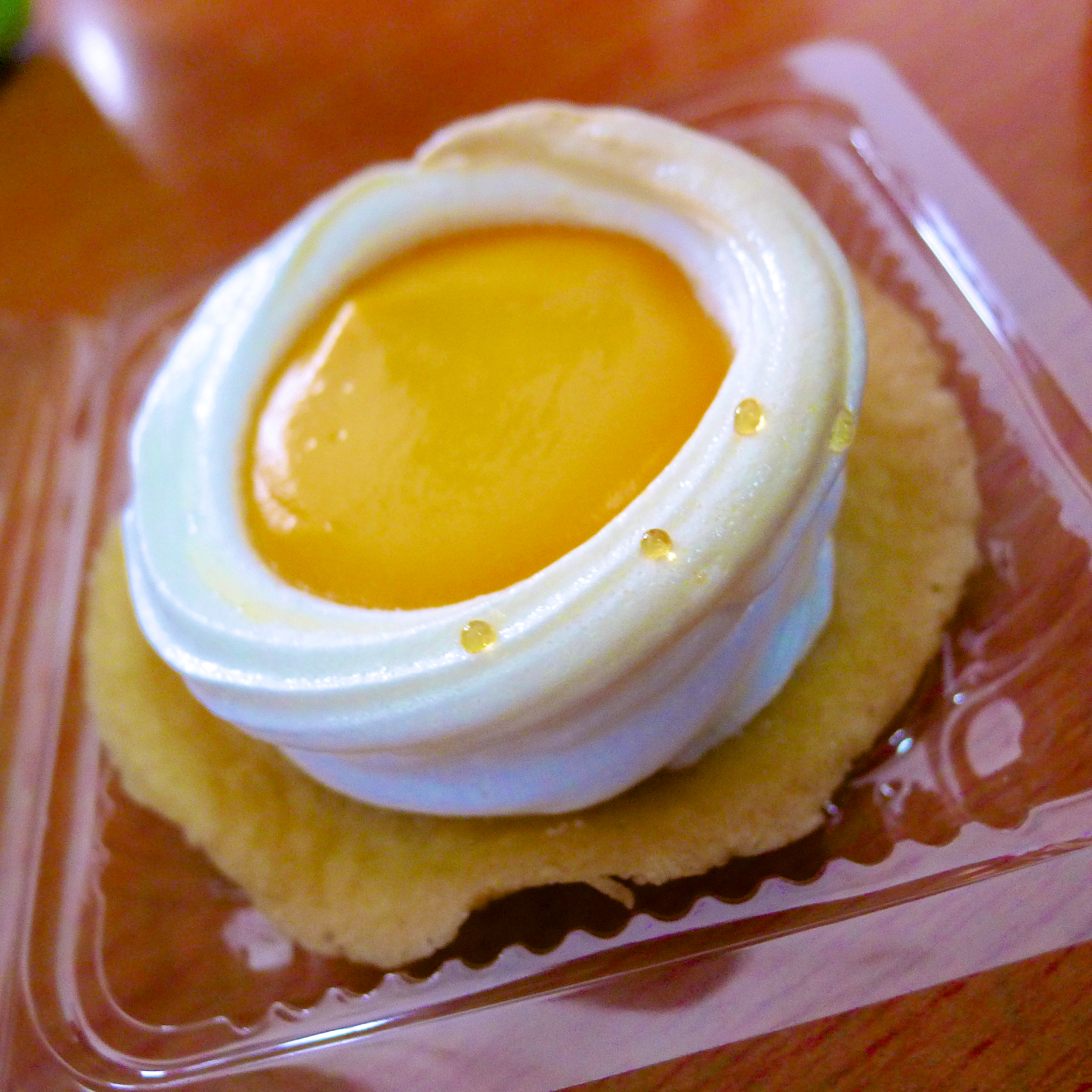
This unusual Sandakan speciality is so-called because it looks like a flying saucer. Some people also refer to itas cow dung or cow pat tart, which is sometimes considered to be funnier.
The tart itself is quite simple – it’s a flat vanilla cake with custard on top and finished off with a spiral of meringue (which is what gives it the cow dung look). The tarts can be found at restaurant and markets throughout Sabah. Of course, people will have their own favourite stores and stalls to visit to enjoy this teatime snack.
10. Ambuyat
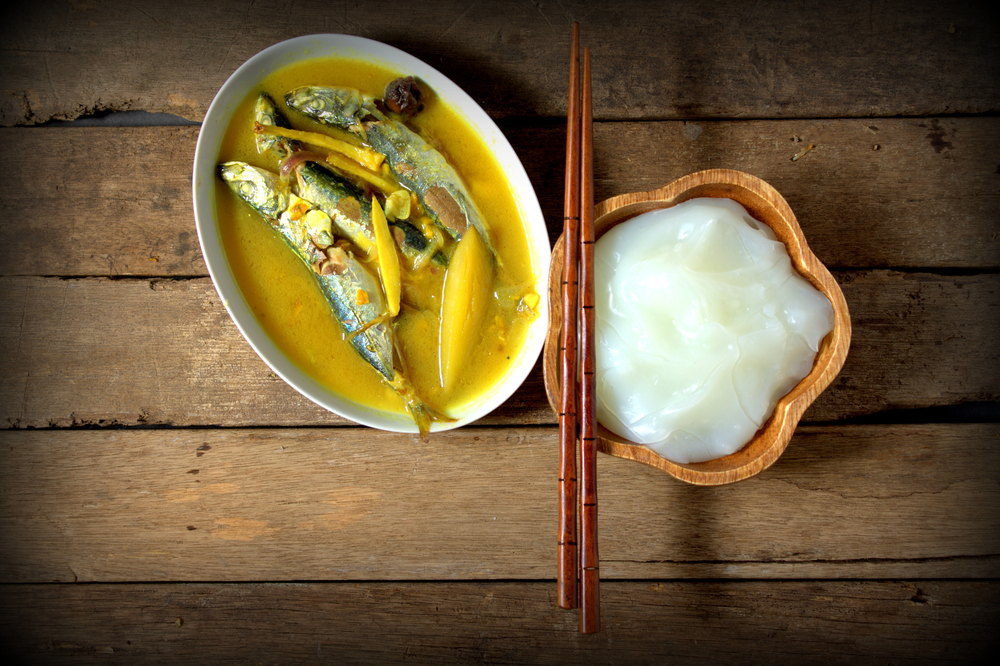
Made from sago starch, ambuyat is a gluey, starchy, porridge. Often eaten as a substitute for rice during celebrations in Sarawak, Sabah and Labuan, ambuyat is eaten with a variety of savoury dips and side dishes.
A pair of bamboo sticks similar to chopsticks are used to scoop up ambuyat by rolling the starch around the prongs and then dipping it into a sauce. Ambuyat is best eaten with spicy, tangy, and sour dishes like midin or pinasakan. The dish is said to have originated in Brunei and is actually Brunei’s national dish. In Labuan, it is sometimes known as linut.
11. Tuhau
Originating from Tambunan, Keningau, and Ranau, the interior regions of Sabah, this dish is made from wild ginger. The shoots of the wild ginger are thinly diced and then mixed with chilli and scallions before being pickled with salt and vinegar.
The dish is sometimes eaten as a condiment but is more often used in cooking, especially when cooking fish dishes like pinasakan. Tuhau can be found in markets and stores around Sabah.
12. Latok
A traditional dish of the Bajau tribe in Sabah, this is actually a type of seaweed, eaten fresh as a salad or side dish. Latok is sometimes referred to as ‘green caviar’ because the grape-like bulbs pop in your mouth as you eat it.
Latok is often served with a sprinkle of lime and fresh chillies as a tangy, salty accompaniment to a fish dish.
13. Kuih jala
Kuih jala in East Malaysia – not to be confused with roti jala in West Malaysia – is a street snack made with rice flour, sugar, and water. The dense, gluey batter is poured into a half a coconut shell with small holes poked at the bottom which makes the batter fall in thin strands.
A net is formed in hot oil using the special ladle until it is thick enough to be folded into triangular shapes or rolled into a cone. The resulting treat is a net-like, crunchy snack that you can munch on as you walk around the towns of Sarawak and Sabah.
14. Bambangan
Bambangan is a seasonal wild mango fruit that is popular throughout Borneo. The fruit is spherical and covered in a thick, brown skin. When ripe, it can be peeled and eaten like a mango. However, bambangan is usually made into a pickle or cooked with fish.
Unripe bambangan is use in preparing pinasakan while ripe ones are fried with salted fish. Even the seed of a bambangan fruit is used, usually grated and mixed into ripe bambangan flesh for added texture and flavour.
"ExpatGo welcomes and encourages comments, input, and divergent opinions. However, we kindly request that you use suitable language in your comments, and refrain from any sort of personal attack, hate speech, or disparaging rhetoric. Comments not in line with this are subject to removal from the site. "



